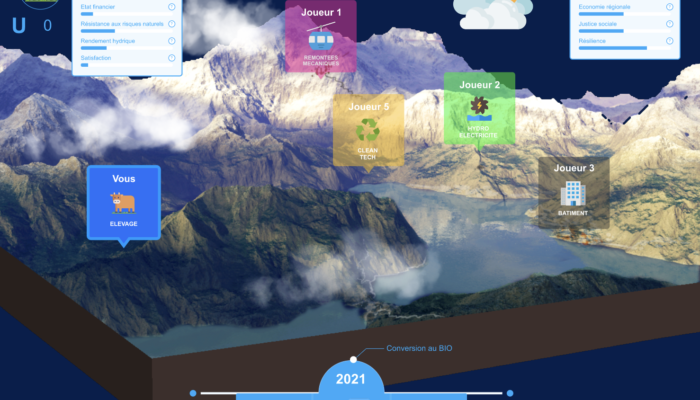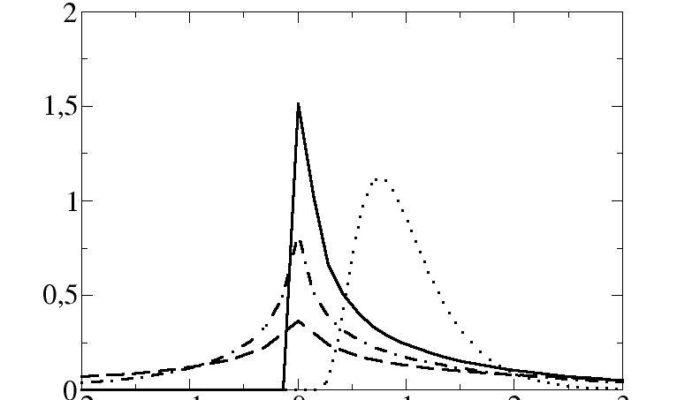In October 2019, an open letter was published, addressing both EGU and AGU regarding their policy to reduce the carbon footprint of their annual conferences. Almost 2000 scientists already signed this letter, asking for more ambitious measures to decline carbon emissions, in line with the goals of 50% reduction by 2030 and near-zero emissions by 2050 (IPCC SR15, 2018). Some of the proposed improve ...[Read More]
Geodynamics
post-AGU blues
Under the motto Better Late than Never, in today’s blog post we look back at the AGU 2019 Fall Meeting 2019. Last December (9-13th December) the AGU 2019 Fall Meeting took place during which Earth and Space scientists from all over the world gathered in San Francisco in the pursuit of high-quality science and a more sustainable future, through worthy discussions and networking. Whilst the pr ...[Read More]
Soil System Sciences
The present and future of soil conservation in Europe
Soil is a fragile and finite natural resource that must be carefully managed and protected to ensure future food and fiber provision as well as delivery of many other ecosystem services such as water purification or flood regulation [1]. Soil health and preservation at global scales has been receiving increasing attention, for example, in discussions at the 2019 UN climate conference, COP25 in Mad ...[Read More]
Natural Hazards
The Italian catalogue of earthquake-induced ground failures: saving the past for the future seismic hazard assessment #CEDIT
The Italian Catalogue of Earthquake-Induced Ground Failures (CEDIT) is a database available online since January 2013 that stores data about ground failures induced by strong earthquakes, which occurred on the Italian territory since 1000 AD up to now. CEDIT is freely available on a web-GIS portal (currently the access is granted using Firefox as a web browser, the upgrade to other browsers ...[Read More]
Cryospheric Sciences
Climate Change & Cryosphere – The tropical fingerprint in Arctic climate
We know that climate change is being felt worldwide, but it is especially prominent in the Arctic, where temperatures are warming twice as fast as anywhere else on the planet. This especially sensitive environment, whose icy, snow-covered land and sea is so important in the global climate system, is really starting to feel the heat. But where is this heat coming from? In this blog post, we will ex ...[Read More]
Geodynamics
The Sassy Scientist – Busting That Rut
Lily took a nice break during the Christmas season, but quickly restressed, and asked: Everytime I take some time off work, I feel guilty I did afterwards. Should l simply keep working continuously? Dear Lily, I would keep working continuously if I were you. I mean, how else are you going to finish your research, write those papers, complete that funding request, prepare a new undergrad course, se ...[Read More]
Hydrological Sciences
Designing a video game – a new scientific experience
“We are in 2050. In 2020, a multi-disciplinary team of scientists and of actors from the Swiss mountains have launched the digital interface MOUNTAINCRAFT. The impact of the launching was immediate: collectivities, socio-economic actors, people living in the area adopted the tool and started implementing adaptation measures to cope with climate change (…). Ultimately, the tool spread across ...[Read More]
Geodynamics
New Year’s Resolutions
Hello everyone and a very belated Happy New Year to y’all! We are back completely refreshed from our little break and ready to posts countless of blog posts! Of course, posting blog posts is our number one New Year’s resolution, but the EGU Geodynamics Blog Team also has a couple of others. Happy 2020! Iris van Zelst 1. Take (all my) holidays (for a change) 2. Go to the theatre a lot a ...[Read More]
Nonlinear Processes in Geosciences
NPG Paper of the Month: “On fluctuating momentum-exchange in idealised models of air-sea interaction”
This month the NPG Paper of the Month award is achieved by Achim Wirth for his paper “On fluctuating momentum-exchange in idealised models of air-sea interaction” (https://www.nonlin-processes-geophys.net/26/457/2019/). Achim tells us about the importance of the results achieved with this paper for investigating the energy coupling between the ocean and the atmosphere. Achim obtained his PhD at th ...[Read More]
Cryospheric Sciences
Water plumes are tickling the Greenland Ice Sheet
7 meters of sea-level rise – what you would get if the whole Greenland Ice Sheet melted. But the tricky question is: how much of this ice will be melted in the next decades, and how fast will it occur? This piece of information is critical in order to plan for present and future populations living in coastline areas, all around the world. How much and how fast can the Greenland Ice Sheet melt ? In ...[Read More]










